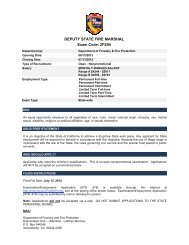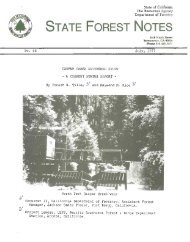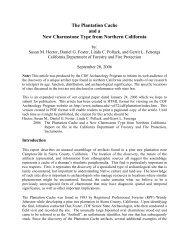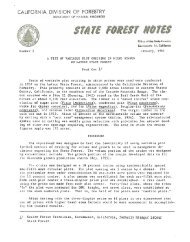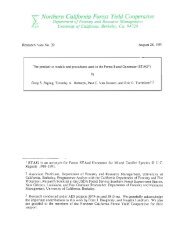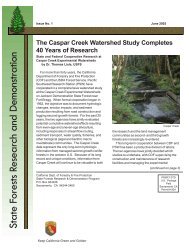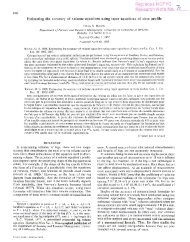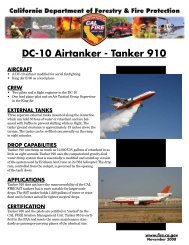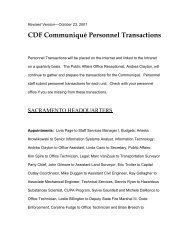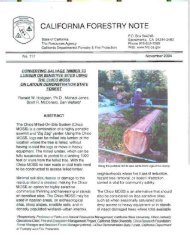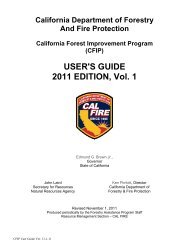Create successful ePaper yourself
Turn your PDF publications into a flip-book with our unique Google optimized e-Paper software.
Assessing current fire protection capability <strong>of</strong> two different air<br />
base locations<br />
It is well known that fixed wing and helicopter based aircraft are integral and <strong>of</strong>ten used<br />
components <strong>of</strong> the fire suppression system in Southern <strong>California</strong> and in Riverside<br />
County. For Riverside County, the best summary <strong>of</strong> the effectiveness <strong>of</strong> the overall fire<br />
suppression system is the “Riverside <strong>Unit</strong> Fire Management Plan 2005” (Anthony 2005).<br />
This is posted on the CDF web site at<br />
http://www.fire.ca.gov/FireEmergencyResponse/FirePlan/units_countyfireplan.asp and is<br />
also available at any CDF unit on the CDF’s intranet at<br />
http://cdfweb/Its/FirePAS/<strong>Unit</strong>FireMgtPlans/RRU.pdf . In addition to describing the<br />
overall approach <strong>of</strong> the Fire Plan, the document provides detailed information on the<br />
specific assets at risk for each battalion within the County as well as a detailed Ignition<br />
Workload Assessment that summarizes where wildland fires start in the county, the type<br />
<strong>of</strong> ignition, and the whether the fire is contained within initial attack. The 2005 Fire Plan<br />
notes that Riverside <strong>Unit</strong> achieves very good initial attack success, for grass fuel types –<br />
96%, brush fuel types – 91%, woodland – 94% and conifer forests – 95%. These high<br />
success rates are due in large part to the quick arrival <strong>of</strong> a range <strong>of</strong> fire suppression<br />
resources in initial attack – fire engines, hand crews, bulldozers, fixed wing aircraft, and<br />
helicopters.<br />
Using the <strong>California</strong> Fire Economics Simulator to assess<br />
different location <strong>of</strong> fire suppression resources<br />
The increase, decrease or relocation <strong>of</strong> any fire suppression resource will change the<br />
timing and scale <strong>of</strong> suppression resources arriving at a fire. To assess the potential impact<br />
<strong>of</strong> moving or building a fire engine station, adding additional resources to existing<br />
stations, or locating or relocating, CDF worked with the University <strong>of</strong> <strong>California</strong> to<br />
develop a tool to accurately predict any potential changes in initial attack success due to<br />
changing the number and location <strong>of</strong> fire suppression resources. The details <strong>of</strong> the tool,<br />
known as the <strong>California</strong> Fire Economics Simulator (CFES2), are described in the two<br />
attached memorandum – “CFES2 – <strong>California</strong> Fire Economics Simulator” (Stewart 2002)<br />
and “CFES2 in Brief” (Spero 2002) that were prepared for briefings <strong>of</strong> legislative staff<br />
and the Department <strong>of</strong> Finance. Basically, an accurate comparison <strong>of</strong> the potential<br />
differences between the two proposed air tankers locations requires three primary<br />
components to ensure that the results match the real world conditions.<br />
1. A database <strong>of</strong> the potential fire starts and weather conditions that replicates<br />
historic, and presumably future, conditions. This database should include best<br />
case and the worst case, and scenarios describing everything in between in the<br />
same proportions that they occur.




